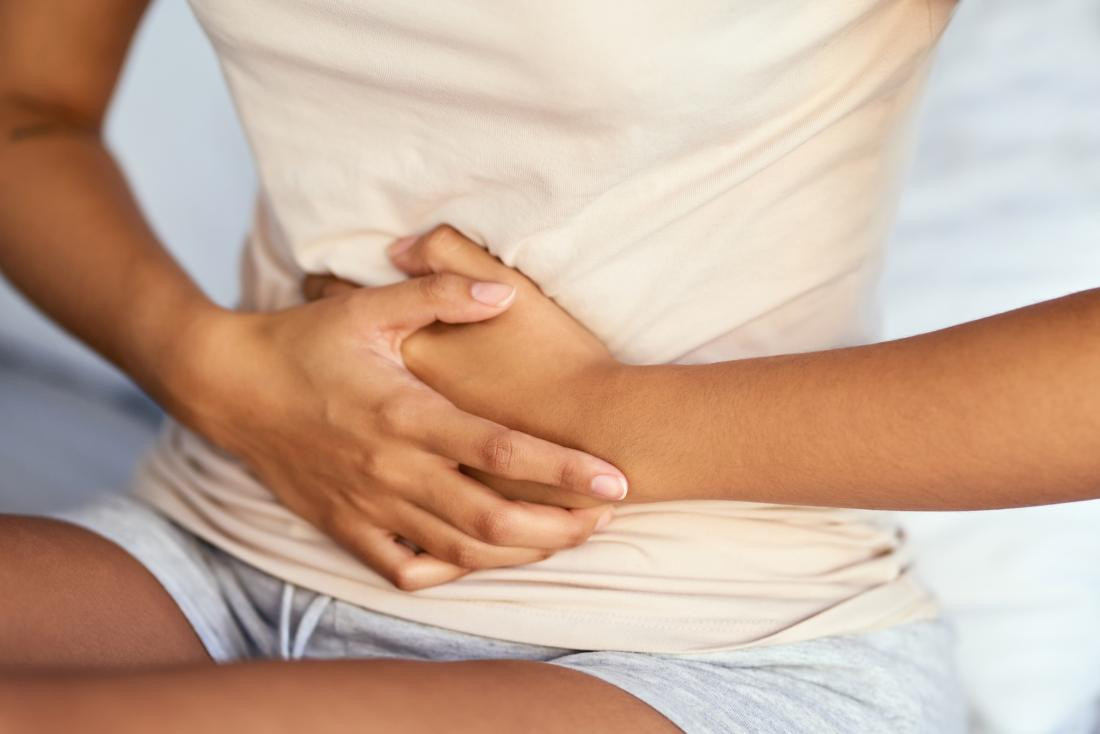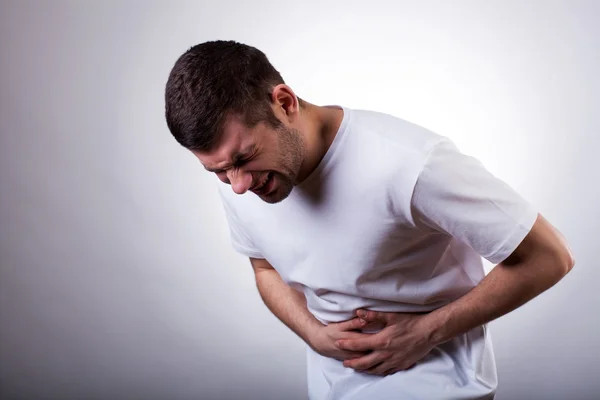Definisi
Ulkus duodenum adalah tukak yang terjadi pada dinding bagian dalam usus 12 jari. Biasanya, tukak ini disebabkan oleh infeksi bakteri Helicobacter pylori sehingga persebaran penyakit ini tergantung oleh persebaran bakteri ini. Ulkus duodenum merupakan bagian dari ulkus peptikum, yang dapat terjadi pada lambung dan usus halus. Ulkus peptikum yang terjadi pada lambung seringkali disebut sebagai tukak lambung.
Penyebab
Tukak terbentuk apabila cairan lambung berkontak dengan dinding usus halus. Apabila lapisan pelindung (dalam hal ini mukosa) pada dinding usus halus terlalu tipis atau tidak ada sama sekali, cairan lambung yang mengandung asam kuat dapat melukai dinding usus halus. Infeksi bakteri Helicobacter pylori dapat menyebabkan penipisan lapisan mukosa serta mengiritasi sel-sel usus halus, sehingga cairan lambung dapat berkontak langsung dengan dinding usus halus. Selain itu, penipisan lapisan mukosa ini dapat disebabkan oleh penggunaan obat-obatan antinyeri seperti ibuprofen dan asam mefenamat dalam jangka waktu lama. Obat-obatan ini menurunkan produksi prostaglandin, zat yang membantu melindungi dinding lambung dan usus halus dari cairan lambung. Namun, obat antinyeri seperti parasetamol atau asetaminofen tidak akan menyebabkan hal ini.
Faktor Risiko
Faktor risiko ulkus duodenum adalah adanya tukak lambung, bukti infeksi Helicobacter pylori, penggunaan antinyeri dalam jangka waktu yang lama, serta berbagai kondisi lainnya yang menyebabkan penipisan lapisan mukosa, seperti keganasan, kelainan pembuluh darah, dan riwayat kemoterapi. Selain itu, merokok dan minum alkohol dapat meningkatkan risiko terjadinya ulkus duodenum. Pengobatan jangka panjang dengan aspirin dan clopidogrel, yang biasa diberikan pada orang dengan riwayat penyakit jantung koroner dan stroke, juga dapat meningkatkan risiko terjadinya ulkus duodenum.
Gejala
Gejala ulkus duodenum adalah adanya nyeri perut bagian atas hingga dada yang terasa seperti terbakar, rasa kenyang, mual, kembung, serta ketidakmampuan usus mencerna makanan berlemak yang ditandai dengan kembung atau sendawa yang sering dan berbau. Biasanya, nyeri akibat ulkus duodenum membaik dengan makan, sehingga terjadi kenaikan berat badan akibat sering makan untuk menurunkan gejala. Selain itu, gejala lainnya dapat berupa BAB hitam. Apabila terjadi perdarahan berat pada saluran cerna bagian atas, dapat terjadi muntah darah.
Diagnosis
Jika ada kecurigaan terhadap ulkus duodenum, pemeriksaan akan dilakukan untuk mengetahui posisi nyeri pada perut serta adanya tanda-tanda anemia (kurang darah), seperti kulit dan bagian dalam kelopak mata pucat. Pemeriksaan laboratorium dapat pula dilakukan untuk mengetahui komplikasi tukak lambung, seperti pemeriksaan darah lengkap yang bertujuan untuk mengetahui kadar hemoglobin dalam darah. Apabila hemoglobin terlalu rendah, pemeriksaan golongan darah dan crossmatch dapat dilakukan sebagai persiapan transfusi darah. Selain itu, pemeriksaan urea dalam darah dapat dilakukan untuk mengetahui adanya peningkatan jumlah urea yang disebabkan oleh infeksi Helicobacter pylori. Pemeriksaan urea breath test dapat pula dilakukan untuk mencari tahu adanya produk urea akibat infeksi tersebut. Apabila BAB tidak hitam, pemeriksaan darah samar dapat dilakukan untuk mencari adanya darah pada BAB.
Untuk mencari adanya tukak, pemeriksaan ultrasonografi (USG) dapat dilakukan sebagai langkah awal, terutama apabila pasien datang dengan perdarahan saluran cerna atas seperti muntah darah atau BAB hitam. Apabila fasilitas kesehatan memadai, pemeriksaan endoskopi dapat dilakukan. Endoskopi dilakukan dengan memasukkan selang khusus dengan kamera di ujungnya lewat mulut, kemudian menyusuri kerongkongan, lambung, hingga usus halus. Dengan bantuan kamera, posisi dan bentuk tukak dapat dilihat secara utuh. Selain itu, karena ulkus duodenum dapat disebabkan oleh infeksi Helicobacter pylori, dapat dilakukan pengambilan jaringan untuk selanjutnya dilihat di bawah mikroskop untuk membuktikan adanya infeksi ini.
Tata Laksana
Tata laksana ulkus duodenum sangat tergantung dengan kondisi pasien ketika datang. Apabila pasien datang dengan perdarahan saluran cerna atau bahkan usus halus yang berlubang, tata laksana diprioritaskan untuk menjaga agar keadaan pasien tetap stabil, misalnya dengan pemasangan infus dan pemberian cairan untuk menjaga volume darah. Selain itu, pasien dengan kondisi ini biasanya akan dirujuk untuk menjalani pembedahan untuk menghentikan perdarahan dan menutup lubang pada usus halus. Penanganan pada pasien seperti ini juga membutuhkan waktu hingga 2-3 bulan, dan kondisi ulkus harus dipantau ulang dengan endoskopi.
Apabila Anda memiliki riwayat konsumsi obat antinyeri dalam jangka waktu lama, penggunaan obat ini akan dihentikan untuk mencegah perburukan kondisi. Apabila Anda merupakan seorang perokok aktif dan/atau rutin mengonsumsi alkohol, berhenti merokok dan minum alkohol dapat mencegah perburukan kondisi. Merokok dan konsumsi alkohol dapat memperparah gejala yang Anda alami.
Selain itu, Anda akan diberikan obat-obatan untuk menurunkan produksi cairan lambung. Lama pemberian obat akan tergantung dari gejala yang muncul, tingkat kepatuhan minum obat, dan risiko tukak terbentuk kembali. Apabila bakteri Helicobacter pylori ditemukan sebagai penyebab, Anda akan diberikan dua antibiotik untuk membasmi bakteri tersebut.
Komplikasi
Komplikasi utama ulkus duodenum adalah perdarahan, berlubangnya usus (perforasi), dan hambatan pada lambung (obstruksi). Perdarahan dapat ditangani dengan obat-obatan dan endoskopi. Endoskopi pada hal ini dapat dilakukan untuk menggumpalkan perdarahan dengan panas, menjepit bagian yang berdarah, atau menyuntikkan obat-obatan di dekat bagian yang terluka. Apabila terapi ini gagal atau tidak dapat dilakukan (misalnya akibat keadaan kritis atau tukak terlalu besar), pasien dapat dirujuk untuk dilakukan prosedur pembedahan.
Perforasi usus halus biasanya menyebabkan keluhan nyeri perut luas yang sangat hebat, dapat berawal dari perut bagian tengah atas lalu menyebar ke seluruh bagian perut. Pada kasus seperti ini, pembedahan akan dilakukan untuk menutup lubang pada usus halus tersebut, dan antibiotik akan diberikan untuk mencegah infeksi pada rongga perut. Obstruksi pada jalur keluar lambung lebih jarang terjadi dibandingkan kedua komplikasi sebelumnya.
Pencegahan
Ulkus duodenum dapat dicegah dengan mencegah infeksi Helicobacter pylori. Belum diketahui secara pasti bagaimana bakteri ini menyebar, namun dugaan kuatnya adalah kontak dengan orang lain atau lewat makanan dan minuman. Oleh karena itu, pencegahan dapat dilakukan dengan mencuci tangan sebelum makan serta mengonsumsi makanan yang sudah dimasak secara matang.
Apabila Anda memerlukan terapi antinyeri yang diresepkan oleh dokter, Anda dapat meminumnya bersama dengan makan. Konsultasikan pula kepada dokter untuk memberikan antinyeri dengan dosis terendah yang efektif. Selain itu, jangan konsumsi alkohol selama pengobatan berlangsung. Dokter juga dapat meresepkan obat-obatan untuk menurunkan produksi asam lambung. Sebaiknya Anda tidak mengonsumsi obat antinyeri di luar resep dokter.
Kapan harus ke dokter?
Segeralah ke dokter apabila Anda atau orang di sekitar Anda mengalami muntah darah atau BAB hitam. Apabila keluhan muntah darah diikuti dengan sesak, segeralah bawa orang tersebut ke IGD, karena ada kemungkinan darah tertelan ke saluran napas. Apabila Anda mengalami gejala lainnya seperti mudah lelah atau nyeri perut hebat yang membaik dengan makan, Anda dapat berkonsultasi ke dokter karena gejala ini dapat menjadi petunjuk adanya ulkus duodenum atau perdarahan saluran cerna lainnya.
Mau tahu informasi seputar penyakit lainnya? Cek di sini, ya!
- dr Hanifa Rahma
Pathak, N. (2021). Peptic Ulcers (Stomach Ulcers). Retrieved 30 December 2021, from https://www.webmd.com/digestive-disorders/peptic-ulcer-overview
Peptic ulcer - Symptoms and causes. (2021). Retrieved 30 December 2021, from https://www.mayoclinic.org/diseases-conditions/peptic-ulcer/symptoms-causes/syc-20354223
Quinones, G., & Woolf, A. (2021). Duodenal Ulcer. Retrieved 30 December 2021, from https://www.ncbi.nlm.nih.gov/books/NBK557390/




/6302128f3fb09.jpg)







